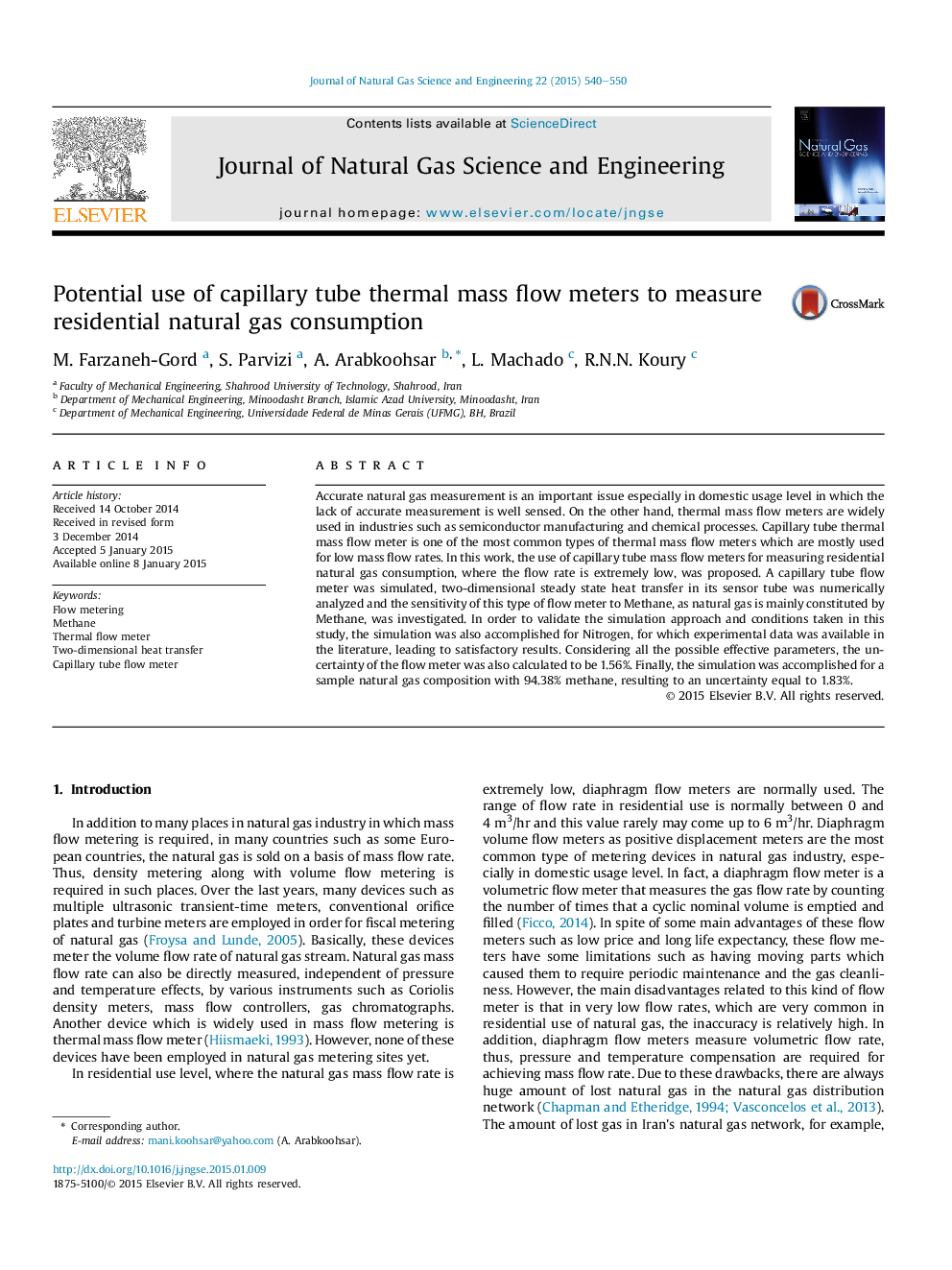| کد مقاله | کد نشریه | سال انتشار | مقاله انگلیسی | نسخه تمام متن |
|---|---|---|---|---|
| 1757840 | 1523018 | 2015 | 11 صفحه PDF | دانلود رایگان |
• Employing capillary tube flow meters for natural gas metering is proposed.
• The operation principles of the flow meter are comprehensively explained.
• Numerical methods were employed to simulate the flow meter performance.
• Available experimental data was used to validate the numerical simulation.
• Uncertainty factor was calculated for the apparatus.
Accurate natural gas measurement is an important issue especially in domestic usage level in which the lack of accurate measurement is well sensed. On the other hand, thermal mass flow meters are widely used in industries such as semiconductor manufacturing and chemical processes. Capillary tube thermal mass flow meter is one of the most common types of thermal mass flow meters which are mostly used for low mass flow rates. In this work, the use of capillary tube mass flow meters for measuring residential natural gas consumption, where the flow rate is extremely low, was proposed. A capillary tube flow meter was simulated, two-dimensional steady state heat transfer in its sensor tube was numerically analyzed and the sensitivity of this type of flow meter to Methane, as natural gas is mainly constituted by Methane, was investigated. In order to validate the simulation approach and conditions taken in this study, the simulation was also accomplished for Nitrogen, for which experimental data was available in the literature, leading to satisfactory results. Considering all the possible effective parameters, the uncertainty of the flow meter was also calculated to be 1.56%. Finally, the simulation was accomplished for a sample natural gas composition with 94.38% methane, resulting to an uncertainty equal to 1.83%.
Journal: Journal of Natural Gas Science and Engineering - Volume 22, January 2015, Pages 540–550
